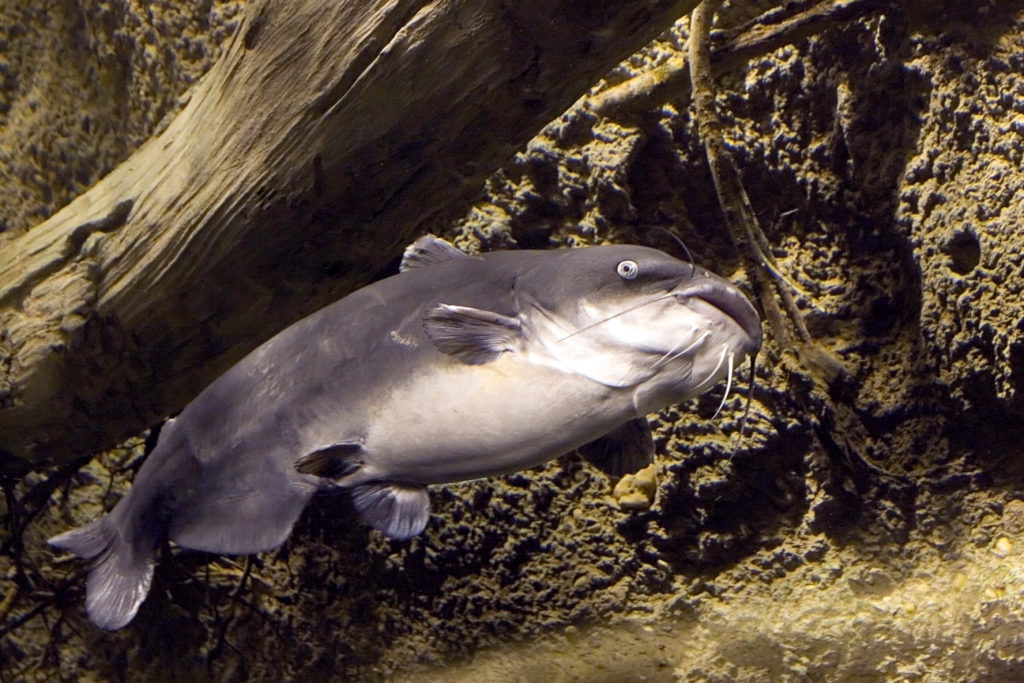Bigger Fish May Need Bigger Tackle

By Dennis Doyle
My rod tip twitched, then it surged. Watching carefully, I waited as the fish pulled the rod down into a deeper and deeper curve. In this age of circle hooks it’s imperative that the fish hooks itself—any effort on my part has inevitably improved only the fish’s fortune. Finally, convinced by the wailing drag from a good, solid hook set, I picked up the stick, snugged down the star drag even more and leaned into the strike.
It made little difference to the fish as it continued to pull out line at will. I was anchored just outside of the mouth of the Severn in 35 feet of water and this was the second big fish of the morning. The first was a 34-inch striper my buddy had pulled in and this one seemed to be decidedly better than that. Running down current and with 50 yards of line already out over its shoulder, it looked like it just might be a lengthy battle for me.
Using a 6.5-foot, heavy action baitcasting outfit with a tricked-out Abu 5500 spooled with 20-pound Pline, I realized I might just be at the limit of my tackle. Adding any more stress to the rod or the reel, just might end up with a disaster. I could hear the creaking and popping of graphite fibers as the rod blank was bending into the corks, the line was stretched so tight it was beginning to hum.
Luckily there is little in that stretch of river to foul so I had no problem with backing off on the drag and letting the brute run. Soon I actually believe the fish forgot about being hooked and had started to wander about looking for something to eat when I was finally able to recover some line. I did so cautiously and continuously.
Then, having snugged down my drag with about half my line retrieved, I reasserted the rod pressure and renewed serious battle. It took the critter awhile before it detected the change in circumstances and took back everything I had regained. This went on, back and forth, for long minutes until the creature finally ran out of gas (or willpower) and let itself be led to the boat.
It took the two of us on the net to get the big blue cat over the gunnel. My guess was that the thug was a bit over 30 pounds and slowly something else began to tug at my awareness. A 30-pounder is not a big blue cat. Just down Virginia way, one of over 140-plus pounds has been boated, beating another of 140 pounds and with a number of blues already on the books from the James River at over 100 pounds.
The current Bay catfish species, blue, channel, flatheads and whites, have been showing up in larger and larger numbers throughout the Bay for at least the last five years and luckily our rockfish tackle has been up to the task of handling them. But for how long? When 30-pounders are increasingly common, light tackle will soon no longer handle the bigger beasts so it may be time to begin upgrading to at least one or two heavier setups for extra-large hooks, baits and triple digit swimmers.
Most anglers currently have stouter rockfish gear but almost all of it is designed specifically for trolling. While you can fish bait (almost the sole tactic for catfishing) with conventional tackle, it is not designed for casting and will prove frustrating to put into efficient use either from boats or the shore. Catfish tackle targeting the heavier fish (two of our four species can exceed well over 60 pounds) is generally composed of 6.5- to 8-foot heavy action casting and spin rods with reels designed for 30- to 60-pound line in 200- to 300-yard capacities and correspondingly heavy drags.
I have high hopes that when DNR finally gets the desired rockfish populations back their numbers will push the catfish census back into a more desirable balance but in the meantime, I’m hoping to tangle with a few of these giants. And I’ll need way stouter tackle to make that possible.
